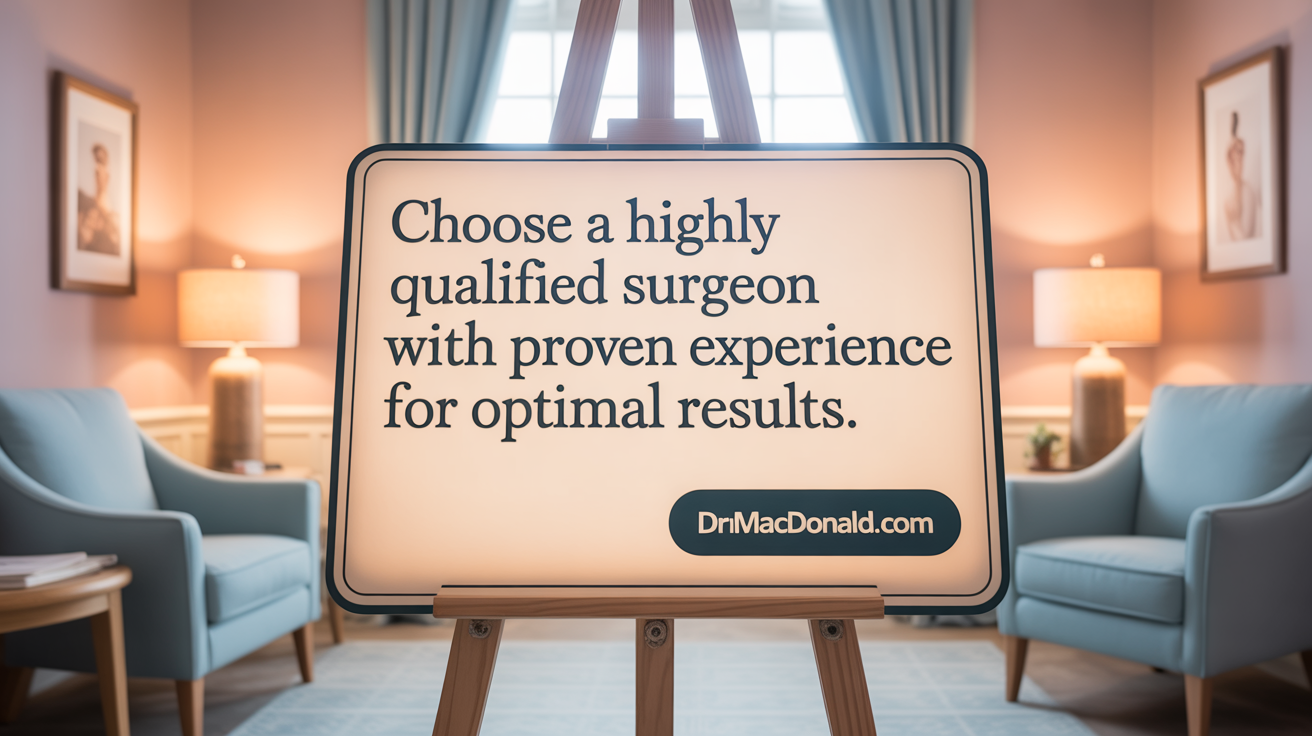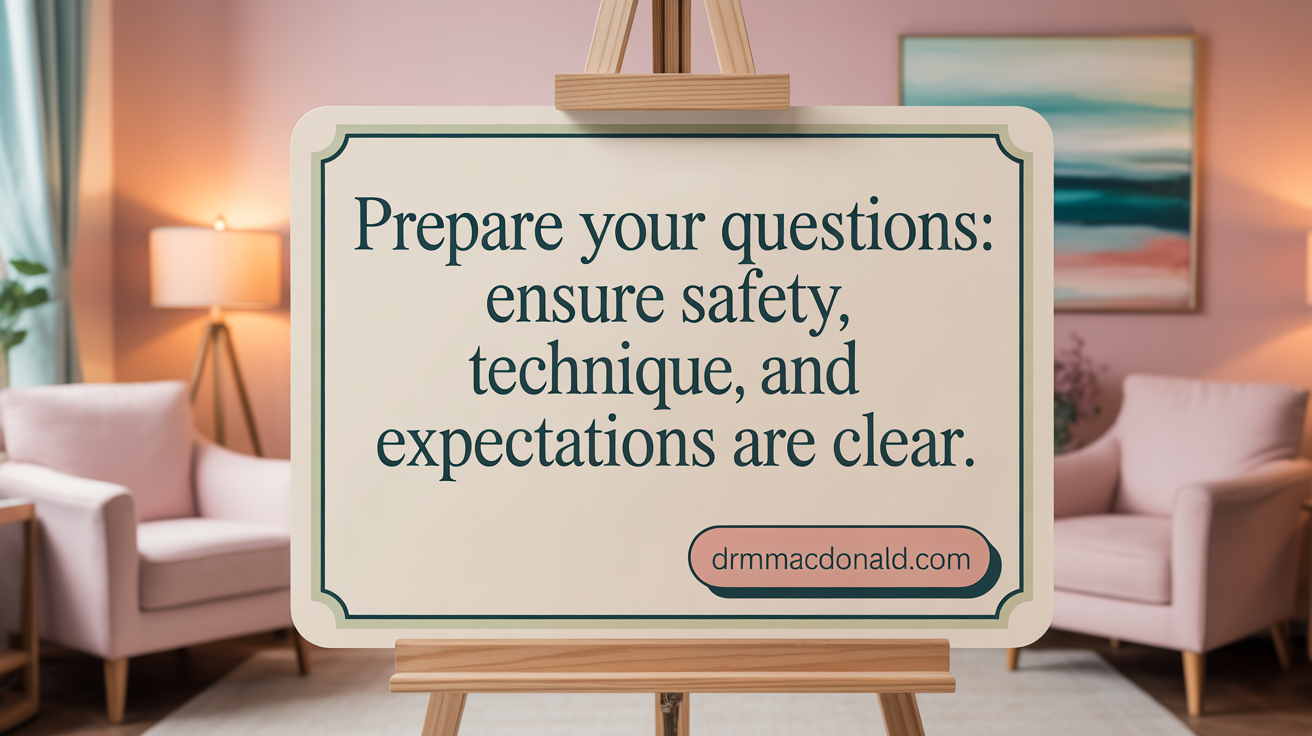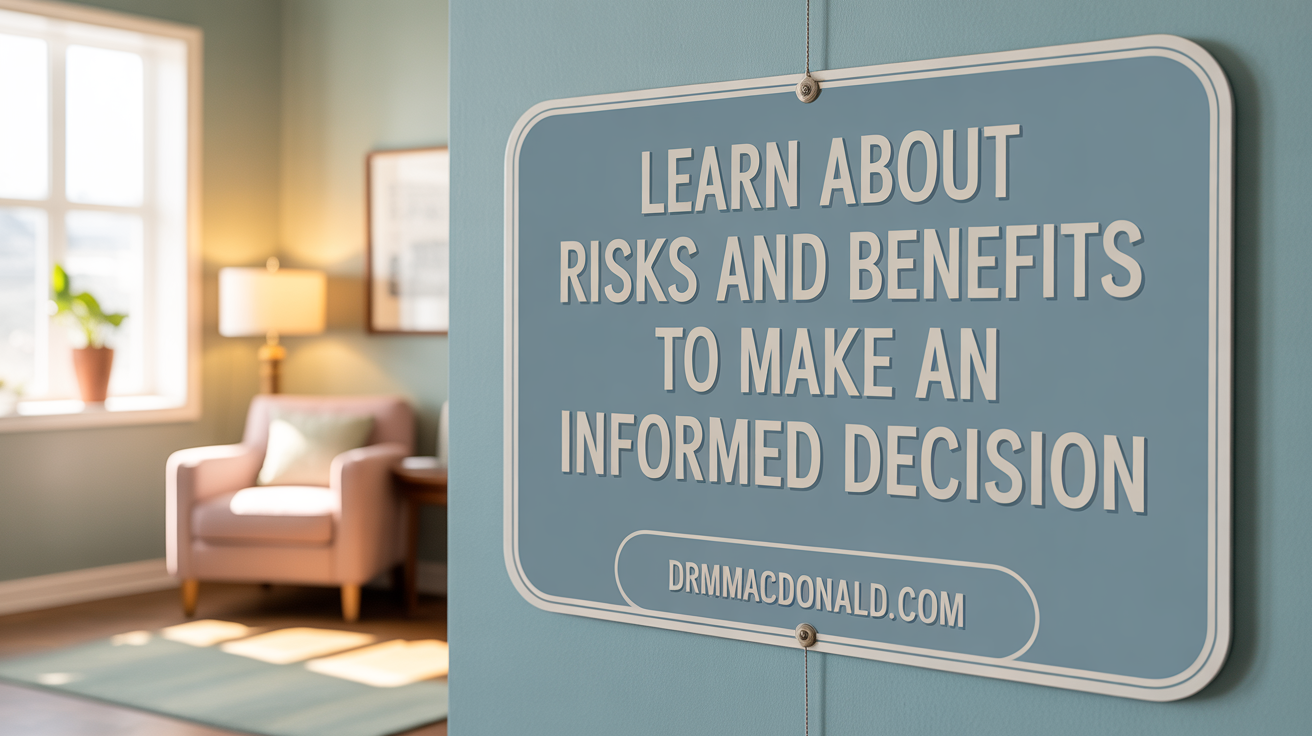Preparing for Your Eyelid Surgery Consultation
A thorough consultation with your surgeon is the cornerstone of a successful eyelid surgery journey. Asking the right questions and understanding the critical aspects of the procedure can empower you to make informed decisions and set realistic expectations for your results and recovery. This guide outlines key considerations and vital questions to discuss with your surgeon during your eyelid surgery consultation.
Understanding Surgeon Qualifications and Experience
 When considering eyelid surgery, it is crucial to assess your prospective surgeon’s qualifications and experience thoroughly. An experienced surgeon will have proper board certification, ideally by the American Board of Plastic Surgery or the American Board of Ophthalmology with specialization in oculoplastics. These credentials attest to their high level of training, ethical standards, and commitment to safety.
When considering eyelid surgery, it is crucial to assess your prospective surgeon’s qualifications and experience thoroughly. An experienced surgeon will have proper board certification, ideally by the American Board of Plastic Surgery or the American Board of Ophthalmology with specialization in oculoplastics. These credentials attest to their high level of training, ethical standards, and commitment to safety.
Beyond certification, inquire about their specific training related to eyelid procedures like blepharoplasty. Surgeons who perform a high volume of these surgeries annually tend to have refined skills and better outcomes. Ask about the number of eyelid surgeries they have performed each year and their overall experience with diverse patient profiles, as this can influence aesthetic results.
Hospital privileges at accredited facilities and the certification of the surgical center are additional indicators of reputable practice, ensuring that your procedure takes place in a safe environment with proper standards.
Review before-and-after photos shared by the surgeon offers valuable insight into their expertise. Pay particular attention to results on patients with similar facial features to yours, as this provides a realistic expectation of your outcome.
Finally, discuss the surgeon’s experience with various patient needs—from cosmetic to functional improvements—and ensure they are familiar with the latest surgical techniques. This comprehensive evaluation helps guide you toward a skilled professional capable of delivering safe, effective, and satisfying results for your eyelid concerns.
Key Questions to Ask During Your Consultation

What are the key questions to ask your surgeon during an eyelid surgery consultation?
When planning for eyelid surgery, or blepharoplasty, it’s crucial to gather all necessary information to ensure your safety and expected outcomes. First, verify if your surgeon is certified by the American Board of Plastic Surgery or another relevant board such as the American Board of Ophthalmology. Board certification confirms the surgeon has undergone rigorous training and adheres to high safety standards.
Ask about their specific training in eyelid procedures and the number of similar surgeries they perform annually. Experience matters; surgeons who frequently perform blepharoplasty tend to have better results and fewer complications.
Inquire where and how the surgery will be performed — whether in a hospital, accredited surgical facility, or outpatient clinic — and whether they have hospital privileges. Knowing the surgeon’s credentials and the safety of their operating environment helps you feel confident in your care.
Discuss the surgical techniques available, such as scalpel, laser-assisted, or transconjunctival approaches. Different methods can influence scarring, recovery, and results. Make sure the surgeon tailors the technique to your anatomy and goals.
Recovery expectations are important. Ask about the typical timeline for healing, swelling, bruising, and when you can return to work or social activities. Clarify post-operative care measures, prescribed medications, activity restrictions, and signs of complications to watch for.
Safety is paramount. Discuss potential risks like dry eyes, impaired vision, bleeding, infection, and scarring. Find out how these issues are handled and the safety protocols the surgeon follows.
To visualize results, request to see before-and-after photos of previous patients with similar concerns. This helps set realistic expectations for your outcomes.
Lastly, inquire about plans for revision surgeries if needed, and whether the surgeon offers ongoing follow-up care. Open, honest communication about all these topics ensures you are well-prepared and comfortable proceeding with your eyelid surgery.
Assessing Your Candidacy and Understanding Procedure Options

How can I determine if I am a good candidate for eyelid surgery?
Deciding if eyelid surgery is right for you begins with a comprehensive health assessment by a qualified surgeon or ophthalmologist. During this evaluation, your medical history and eye health are carefully reviewed to identify any conditions that might influence surgical risks or outcomes. Conditions such as dry eyes, glaucoma, or diabetes are considered, along with an examination of your eyelids for signs of sagging, excess fat, or skin that could impair vision or affect appearance.
A detailed eye exam, possibly including visual field testing and eyelid measurements, helps determine if surgical intervention is necessary either for functional improvements or purely aesthetic reasons. Good candidates typically enjoy good overall health, are non-smokers (as smoking can impair healing), and have realistic expectations about the results. They are prepared to follow post-operative care instructions closely and understand that recovery involves some downtime. Ultimately, suitability depends on your specific eyelid concerns, health status, and goals, making a personalized consultation essential.
What are the procedure options and surgical techniques available for eyelid surgery?
Eyelid surgery options vary based on which areas need correction, including the upper eyelids, lower eyelids, or both. The goal is to remove or reposition excess fat, skin, and, in some cases, muscle tissue to create a more refreshed and natural look.
Surgeons employ different techniques tailored to individual needs. Incisions are often made within natural eyelid folds or along lash lines to conceal scars. For upper eyelids, skin and fat are excised to lift droopy lids, often involving full or partial incisions. Lower eyelid procedures may include transconjunctival methods, where incisions are made inside the eyelid to remove fat, resulting in minimal visible scarring.
Some techniques incorporate laser-assisted methods that reduce bleeding and improve precision. In addition, some patients might benefit from procedures like fat grafting or eyelid muscle tightening for optimal results.
These surgeries can be performed under local anesthesia with sedation or general anesthesia, depending on their extent. Recovery usually takes about 1 to 2 weeks, with most swelling and bruising settling within this period. By selecting the appropriate procedure and technique, surgeons aim to deliver both aesthetic enhancements and functional improvements, such as better vision if eyelid sagging was obstructing sight.
Understanding Risks, Benefits, and Recovery Expectations
 When considering eyelid surgery, it is crucial to ask your surgeon about the potential risks and benefits. Common risks include dry eyes, temporary impaired vision, scarring, bleeding, infection, and adverse reactions to anesthesia. While serious complications are rare, understanding how often they occur and how they are managed can help you feel more prepared.
When considering eyelid surgery, it is crucial to ask your surgeon about the potential risks and benefits. Common risks include dry eyes, temporary impaired vision, scarring, bleeding, infection, and adverse reactions to anesthesia. While serious complications are rare, understanding how often they occur and how they are managed can help you feel more prepared.
Beyond the risks, inquire about the aesthetic and functional benefits you can expect. Many patients experience a more youthful appearance, a refreshed look, and sometimes improved vision if eyelid sagging obstructs sight. The results from blepharoplasty can last several years, often five to ten, depending on individual age, skin quality, and lifestyle factors. Discussing before-and-after photos can be helpful to visualize potential outcomes and manage expectations.
The recovery process usually takes several weeks. Swelling, bruising, and mild discomfort are common initially. Applying cold compresses during the first 48 hours and keeping your head elevated during sleep can significantly reduce swelling. Most patients return to work within 1 to 2 weeks, though strenuous activities should be avoided for about six weeks.
Postoperative care is vital for optimal healing. Following your surgeon’s instructions about wound care, medication use, and activity restrictions will support your recovery. Gentle eyelid massage, typically around 2-3 weeks after surgery and with professional guidance, can help decrease swelling and improve scar quality. Protecting your eyes from sun exposure, maintaining a healthy diet, and watching for signs of infection or unusual changes are essential steps.
Monitoring your postoperative symptoms is important. Seek medical attention if you notice increasing redness, swelling, pain, fever, or any changes in vision. Overall, following proper care procedures will help ensure a safe recovery and long-lasting, satisfying results.
Preparing Effectively for Your Eyelid Surgery Consultation
Before your eyelid surgery consultation, it is crucial to be well-prepared to ensure all your concerns and questions are addressed. Start by researching your potential surgeon’s credentials thoroughly. Verify if they are certified by reputable organizations such as the American Board of Plastic Surgery or American Board of Ophthalmology. Ask about their specific training in eyelid procedures, the number of similar surgeries they perform annually, and their hospital privileges.
Make a comprehensive list of your medical history, including any eye problems, medications you are taking, allergies, and previous surgeries. This information helps your surgeon assess your suitability for the procedure and plan the best approach.
Formulate questions related to the surgical process, recovery expectations, and possible risks. Inquire about the techniques used—whether scalpel, laser-assisted, or transconjunctival—and how they influence scarring and results. Ask about anesthesia options and the specifics of the surgical environment.
Understanding the recovery process is essential. Clarify how long swelling and bruising typically last, when stitches are removed, and when you can expect to return to work or normal activities. Discuss post-operative care, including medications and follow-up visits.
Financial aspects are also important. Check if the procedure is covered by insurance or Medicare, especially if deemed medically necessary. Get a clear understanding of costs involved—surgical fees, facility charges, anesthesia, and aftercare—and inquire about payment plans if needed.
Visualize potential outcomes by viewing before-and-after photos of previous patients, which can help set realistic expectations. Additionally, discuss logistics like transportation to and from the clinic, help at home during initial recovery, and any modifications needed in your environment.
Thorough preparation ensures an informed, confident approach during your consultation, making it easier to decide on the best plan tailored to your needs and safety.
Making an Informed Decision for Eyelid Surgery Success
A well-prepared consultation with a qualified and experienced surgeon is essential to a positive eyelid surgery experience. By thoroughly evaluating the surgeon’s credentials, understanding your candidacy, exploring procedural options, and discussing the risks and recovery details, you empower yourself to make an informed choice aligned with your goals. Open dialogue, clear expectations, and careful preparation can help ensure safe surgery, a smooth recovery, and satisfying results that enhance both appearance and function.
References
- Eyelid Surgery Questions | American Society of Plastic Surgeons
- 10 questions to ask your surgeon before having eyelid surgery
- Good Questions to Ask During a Blepharoplasty Consultation
- Choosing an Eye Surgeon: 5 Questions to Ask Before RLE or Eyelid ...
- 12 Questions To Ask Your Eyelid Surgeon During A Consultation
- 10 Questions to Ask Your Plastic Surgeon - Dr. Adil Ladak
- 9 Blepharoplasty Questions to Ask Your Plastic Surgeon | Dr J Lim
- Questions to Ask During Eyelid Surgery Consultation
